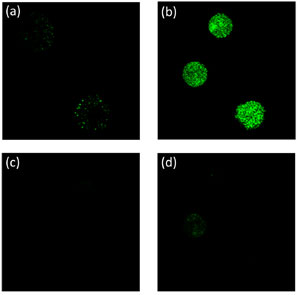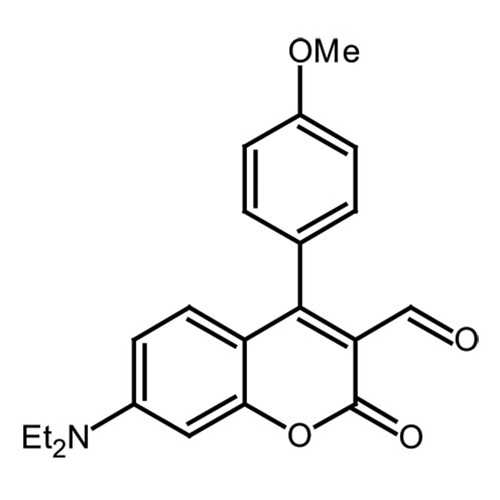Fluorescent Norepinephrine Probe (NS521)
Fluorescent probe NS521 is a chemosensor that selectively labels and fluoresces in response to both dopamine and norepinephrine inside neurosecretory vesicles.
Highlights:
- Binds to catecholamines (norepinephrine) with higher affinity than other biogenic amines (glutamate).
- Shown to work in chromaffin cells
- Sensor survives fixation after live staining
Neurotransmitters are endogenous chemicals that transmit signals across a synapse between two neurons. There are two types of neurotransmitters, excitatory and inhibitory. Dopamine, norepinephrine, and epinephrine are considered excitatory neurotransmitters, which stimulate the brain. Serotonin, gaba, and dopamine are known to be inhibitory neurotransmitters that can calm the brain and help create balance. Norepinephrine acts as stress hormone and neurotransmitter that is responsible for vigilant concentration, whereas dopamine (which can be both inhibitory and excitatory) is responsible for cognitive alertness.
Also available: Fluorescent Neurotransmitter Exocytosis Probe (ES517)
From the laboratory of Timothy E. Glass, PhD, University of Missouri - Columbia
 Part of The Investigator's Annexe program.
Part of The Investigator's Annexe program.
Fluorescent probe NS521 is a chemosensor that selectively labels and fluoresces in response to both dopamine and norepinephrine inside neurosecretory vesicles.
Highlights:
- Binds to catecholamines (norepinephrine) with higher affinity than other biogenic amines (glutamate).
- Shown to work in chromaffin cells
- Sensor survives fixation after live staining
Neurotransmitters are endogenous chemicals that transmit signals across a synapse between two neurons. There are two types of neurotransmitters, excitatory and inhibitory. Dopamine, norepinephrine, and epinephrine are considered excitatory neurotransmitters, which stimulate the brain. Serotonin, gaba, and dopamine are known to be inhibitory neurotransmitters that can calm the brain and help create balance. Norepinephrine acts as stress hormone and neurotransmitter that is responsible for vigilant concentration, whereas dopamine (which can be both inhibitory and excitatory) is responsible for cognitive alertness.
Also available: Fluorescent Neurotransmitter Exocytosis Probe (ES517)
From the laboratory of Timothy E. Glass, PhD, University of Missouri - Columbia
 Part of The Investigator's Annexe program.
Part of The Investigator's Annexe program.
| Product Type: | Small Molecule |
| Name: | NS521 |
| Chemical Formula: | C21H21NO4 |
| Molecular Weight: | 351.15 Da |
| Format: | 2mM Solution in DMSO |
| Purity: | >95%, NMR |
| Solubility: | Freely soluble in methanol and/or DMSO |
| Spectral Information: | λex= 488nm |
| Comments: | 0.1uM for live cell imaging, 1uM for fixed cells |
| Storage: | -20C |
| Shipped: | Cold packs |
Confocal fluorescence microscopy

Epinephrine-containing cells incubated with NS521 (0.1 uM): (a) λex = 488 nm and (c) λex = 440 nm. Norepinephrine-containing cells incubated NS521 (0.1 uM): (b) λex = 488 nm and (d) λex = 440 nm.
Adapted from: Hettie KS, et al., ACS Chem Neurosci. 2013 Jun 19;4(6):918-23.
- Hettie KS, Liu X, Gillis KD,and Glass TE. Selective Catecholamine Recognition with NeuroSensor 521: A Fluorescent Sensor for the Visualization of Norepinephrine in Fixed and Live Cells. ACS Chem. Neurosci. 2013 Jun 19;4(6):918-23.
If you publish research with this product, please let us know so we can cite your paper.


